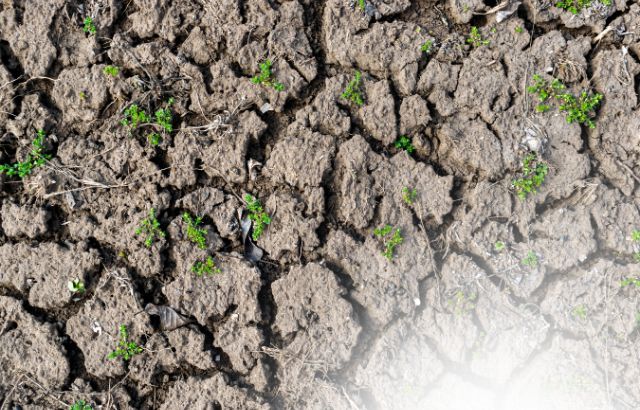Hidden Costs of Agrochemicals- Traditional agricultural practices have long relied on the use of agrochemicals—pesticides, herbicides, fungicides, and synthetic fertilizers—to boost crop yields and protect produce from pests and diseases. While these chemicals have indeed revolutionized agriculture, increasing productivity and food availability, their hidden costs are becoming increasingly apparent. The environmental and health impacts of these chemicals are substantial and multifaceted, with consequences that can extend far beyond the farm.
Hidden Costs of Agrochemicals- Environmental Consequences
Soil Degradation:

Conventional farming chemicals can lead to soil degradation over time. Synthetic fertilizers, while providing essential nutrients, often disrupt the natural microbial balance in the soil. This disruption reduces soil fertility and can lead to increased erosion. For instance, the overuse of nitrogen fertilizers can result in nutrient leaching, where excess nitrogen washes away into water bodies, depleting soil nutrients and affecting soil structure.
Water Pollution:

Agrochemicals can run off from fields into nearby rivers, lakes, and oceans, causing significant water pollution. For example, the use of herbicides like glyphosate can lead to algal blooms in aquatic systems. These blooms deplete oxygen in the water, creating “dead zones” where aquatic life cannot survive. In turn, this affects local fisheries and disrupts aquatic ecosystems.
Biodiversity Loss:

The widespread use of pesticides and herbicides has been linked to the decline of biodiversity. These chemicals do not only target pests but can also harm beneficial insects, birds, and other wildlife. For instance, neonicotinoids, a class of insecticides, have been associated with the decline in bee populations, which are crucial for pollination and maintaining healthy ecosystems.
Hidden Costs of Agrochemicals – Health Impacts
Pesticide Exposure:

Farm workers and rural communities are often at risk of direct exposure to pesticides. Acute exposure can cause immediate health issues such as headaches, nausea, and skin irritation, while chronic exposure has been linked to more serious conditions, including cancer, neurological disorders, and endocrine disruption. For example, studies have shown that long-term exposure to certain pesticides is associated with an increased risk of Parkinson’s disease.
Chemical Residues in Food:

Residues of agricultural chemicals can remain on fruits, vegetables, and grains even after they are harvested. These residues can pose health risks to consumers, particularly vulnerable populations such as children and pregnant women. Research has indicated that exposure to pesticide residues can be linked to developmental and cognitive issues in children.
Antibiotic Resistance:

The use of antibiotics in conventional animal farming to promote growth and prevent disease can contribute to the development of antibiotic-resistant bacteria. These resistant strains can then enter the human population through the food supply, posing significant challenges to public health and making infections harder to treat.
The Role of Green Innovators

Addressing the hidden costs of conventional farming requires a shift towards more sustainable practices. Green innovators play a crucial role in this transition by developing and promoting alternatives to traditional agrochemicals. Here’s how they are making a difference:
- Developing Biopesticides and Organic Alternatives: Green innovators are creating biopesticides derived from natural organisms and substances that target pests without harming beneficial insects or the environment. For example, products based on neem oil or beneficial nematodes can manage pest populations more sustainably. Organic farming practices, which avoid synthetic chemicals, also promote healthier soil and biodiversity.
- Advancing Precision Agriculture: Precision agriculture uses technology to apply agrochemicals more efficiently, reducing the amount needed and minimizing environmental impact. Innovations such as drones and soil sensors allow farmers to target applications more precisely, reducing runoff and soil degradation.
- Promoting Integrated Pest Management (IPM): IPM combines biological, cultural, and mechanical practices to manage pests in an environmentally and economically sustainable way. Green innovators are working to improve IPM strategies and make them more accessible to farmers, reducing reliance on chemical controls.
- Developing Soil Health Solutions: Research into soil health has led to the development of alternative soil amendments and practices that enhance soil fertility without relying on synthetic fertilizers. Green innovators are promoting methods such as composting, cover cropping, and reduced tillage, which support long-term soil health and reduce chemical inputs.
- Educating and Advocating: Green innovators also focus on raising awareness about the impacts of conventional agrochemicals and advocating for policy changes that support sustainable agriculture. Education programs help farmers adopt new practices and technologies that reduce their reliance on harmful chemicals.
Ask Jaiguru- Hidden Costs of Agrochemicals

What are the environmental impacts of traditional agrochemicals?
Answer: Traditional agrochemicals can lead to soil degradation, water pollution, and biodiversity loss, affecting ecosystems and local wildlife.
How do conventional farming chemicals affect human health?
Answer: They can cause health issues such as pesticide poisoning, chronic conditions like cancer, and contribute to antibiotic resistance in bacteria.
What role do green innovators play in addressing agrochemical issues?
Answer: Green innovators develop sustainable alternatives, such as biopesticides and precision agriculture technologies, to reduce reliance on harmful chemicals.
How can integrated pest management (IPM) help reduce chemical use?
Answer: IPM combines biological, cultural, and mechanical practices to manage pests more sustainably, minimizing the need for chemical pesticides.
What are some sustainable farming practices that reduce chemical reliance?
Answer: Practices like organic farming, soil health improvement techniques, and the use of natural pest controls can reduce the need for synthetic agrochemicals.
Final Words by Jaiguru Kadam, Green Innovator
In the quest for a sustainable future, it’s essential to recognize and address the hidden costs of traditional agrochemicals. The environmental and health impacts are profound and far-reaching, affecting not only our ecosystems but also our communities. As green innovators, our mission is to lead the charge towards more sustainable agricultural practices. By embracing alternatives such as biopesticides, precision farming, and integrated pest management, we can mitigate these impacts and build a healthier, more resilient food system. Together, let’s drive the transformation needed to protect our planet and ensure a safe, sustainable future for generations to come.
The hidden costs of conventional farming extend well beyond the farm gate, affecting ecosystems, water resources, and human health. Addressing these challenges requires a concerted effort from all stakeholders, including policymakers, consumers, and especially green innovators who are at the forefront of developing sustainable alternatives. By embracing new technologies and practices, we can mitigate the adverse impacts of agricultural chemicals and move towards a healthier and more sustainable food system.












